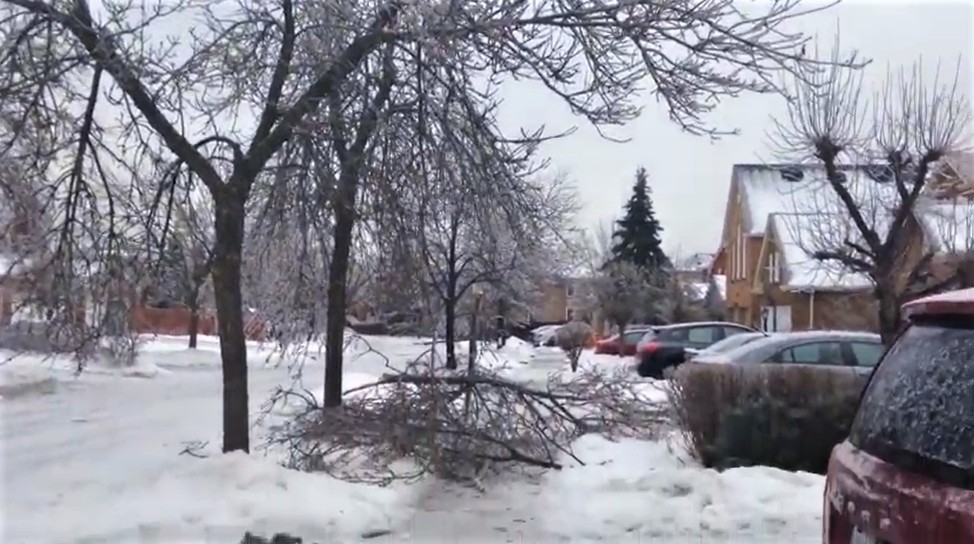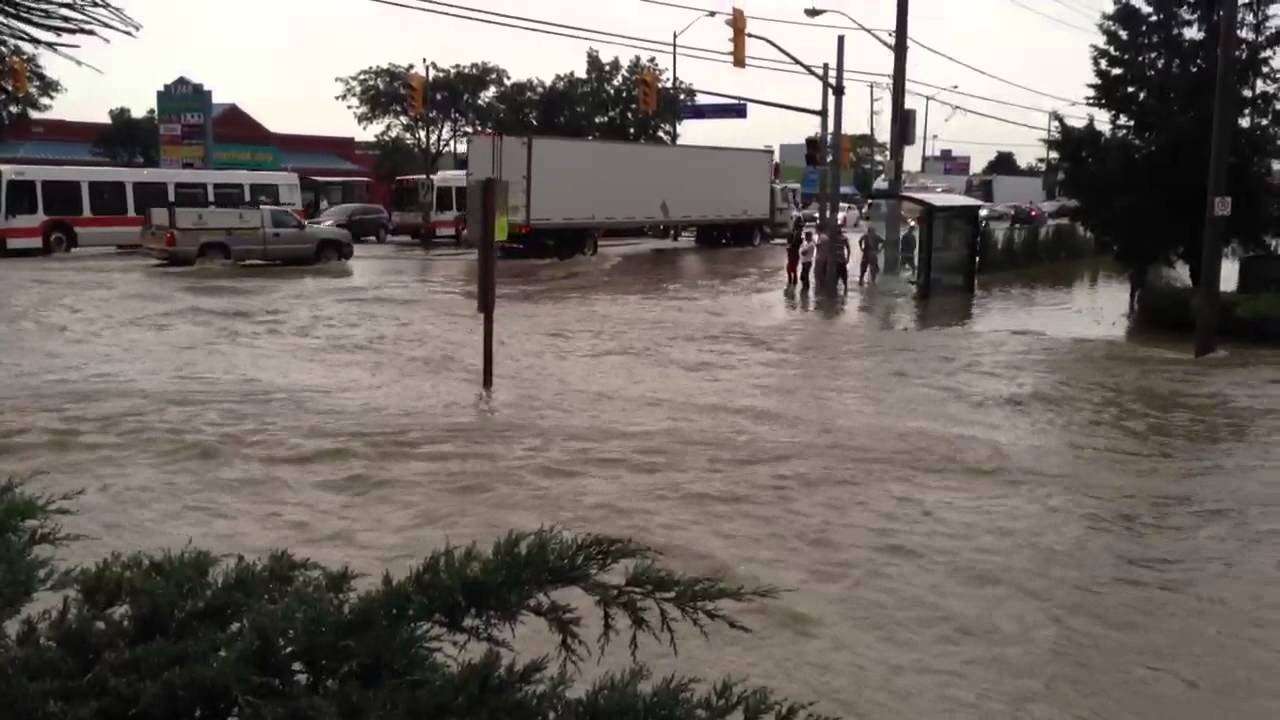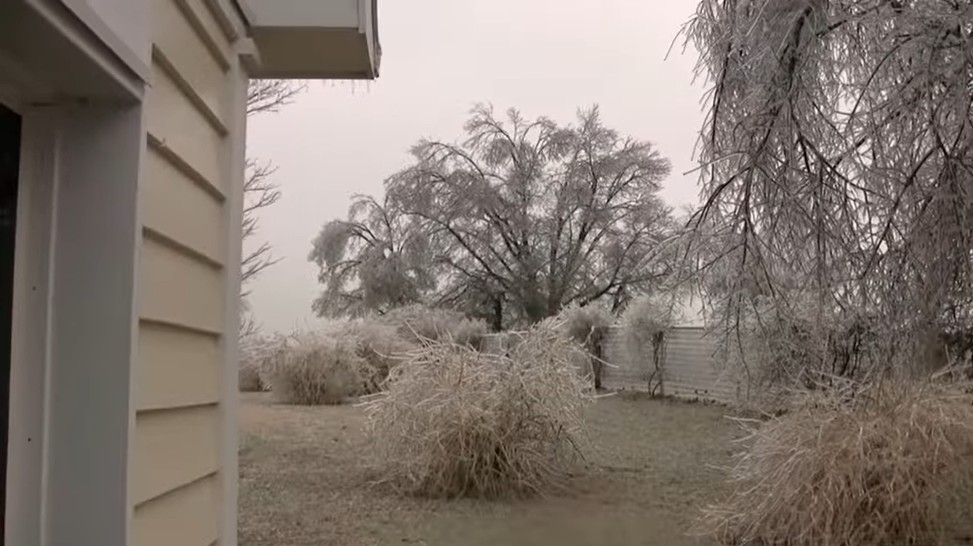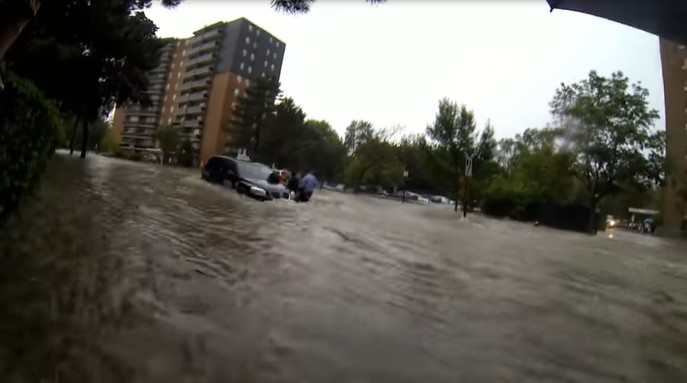
With a harsh winter forecast, governments need to plan for climate emergencies
In 2013, an ice storm pounded through the GTA, tearing down trees, power cables and turning roads into kilometres of NHL-standard ice rinks. In Toronto, the TTC closed its subway and streetcars, while power went out across the region. The damage caused by the freak storm was immense, with the event costing Mississauga around $10 million to clear up.
There was a time when events such as this would have been referred to as “once in a lifetime” or “once in 100 years”. However, with the ever-growing climate crisis, they are becoming significantly more common.
“We see 100 year storms every four years these days, so we’ve been monitoring that,” Gary Kent, the city’s Commissioner of Corporate Services and Chief Financial Officer, said during a media event last week. “In terms of the reserves for winter maintenance, which is how municipalities typically are prepared for that financially, [it] is fine. We have met our targets in all our reserves.”

Mississauga flooding in 2013
Yet, with these storms becoming increasingly common, other avenues of funding and support may have to be explored. Mississauga’s Winter Maintenance fund currently sits at $11.2 million, with the projected balance at the end of the year around $9.3 million. Though this number is relatively healthy for additional snow clearing hours, a storm similar to 2013 would wipe it out – two storms would leave the city scrambling.
“I think the real challenge, and the thing we don’t quite have our heads around yet as the three levels of government, are those very severe events,” Janice Baker, the long-time Mississauga City Manager (who has announced her upcoming retirement), said. “An example would be those ice storms, you had sudden and widespread damage across a very large portion of south western Ontario and municipalities were suddenly faced with a cost of millions to improve the damage. And there was no program [for it]. I actually remember sitting in the meeting where the mayors got together – it was actually the first time I met Rob Ford – and they brought in the minister of municipal affairs and it was said that this was a one-time event which was going to cost hundreds of millions of dollars, so the province kind of had to step up.”
In that situation, the province came up with the Ontario Ice Storm Assistance Program, a “one time disaster relief program” to help cities with the costs which totalled around $190 million across the GTA. The creation of that fund was pushed for by Mississauga, when unwavering mayor Hazel McCallion called a meeting of the mayors from impacted communities at the Living Arts Centre in Mississauga.
However, despite the successful response to the ice storm of 2013, no official mechanism has been set-up for climate change related emergencies. The federal government has a fund, the Disaster Assistance Financial Arrangements, aimed at some freak events, though increasingly unpredictable weather could leave that overwhelmed.
According to the federal government's website, the fund has shelled out more than $5 billion since its creation in 1970, with recent examples including the 2018 flooding in New Brunswick and the devastating wildfires in British Columbia in recent years. However, the legislation around the fund was last seriously considered in 2008, while the formula was tweaked in January 2019.
“So we have to have a national climate change and emergency response program because so often… these things cause fear and widespread damage, not just to public property, but private property as well,” Baker added. “The response had to be negotiated after the event and I think it's time to start thinking about having mechanisms that can provide timely response and certainty [to municipalities after disasters].”


An ice storm and massive flooding hit Mississauga in 2013
The argument for such a structure for municipalities is one that people have heard before: why should the body of government which collects 9 percent of tax dollars have to look after 60 percent of infrastructure on its own?
It’s a fair question. Without a dedicated federal and provincial fund designed to bail-out cities hit by extreme weather, residents would be hit twice. First, personal possessions could suffer in the event of flooding, for example, causing significant expense, before the property tax would be hiked significantly in the next year to attempt to replenish emptied reserves.
Indeed, with climate change at the top of the agenda during the federal election, action of some kind seems obvious. With the Liberals re-elected and the NDP in support of the carbon tax, the system (which is currently revenue-neutral) could be tweaked so that money collected through the tax could be contributed to a climate-emergency relief fund, where it is currently largely returned to private-sector payees in the form of a rebate.
One major theme of the 2019 federal election, which analysts and political parties divined from the final seat count, was that Canadians voted for climate action. With the Conservatives and the (seemingly irrelevant) People’s Party of Canada the only two to oppose the carbon tax, Canada’s 43rd parliament would have a strong mandate to raise or alter the current rate for climate-related emergency assistance. Perhaps those who so strongly opposed the tax would see value in the money being collected to help cities in need.
Of course, as has been established, disaster funds already exist. As with the ice storm in 2013, cities can apply for emergency funding in those situations and, after severe, acute weather damage occurs, it is likely that Ottawa would step up. But little of the assistance is currently in the form of a dedicated stream, that could be quickly accessed when needed, without municipalities having to jump through hoops.
That’s what local leaders want to see, because they understand that summer flash-storms, winter damage and spring flooding, as well as forest fires, are all becoming part of our changing climate reality.
As we enter a new age of climate emergency, it makes sense to plan accordingly.
Many define our world as “post-9/11” due to the phenomenal changes which that event brought to security, international relations and politics. Before 9/11, hijackings existed and airport security was in place, yet with the broader ramifications of the Twin Towers attack, the whole system changed.
If the rhetoric of politicians, including Mississauga Mayor Bonnie Crombie and Prime Minister Justin Trudeau, is to be believed, this situation is similar. We now live in a climate emergency world. The mayor joined the rest of council recently in its formal recognition of a climate emergency.
But what do these sorts of political acts mean? Are they simply symbolic declarations?
Where, in the past, disaster funds existed and have been used for climate related events including flooding and wildfires, those events are now occurring more frequently.
The Remembrance Day storm was the earliest and heaviest in decades and weather forecasters say this will be a particularly harsh winter. It seems to be part of a changing climate pattern that Peel Region, like the rest of the country, needs to be prepared for.
Email: [email protected]
Twitter: @isaaccallan
Submit a correction about this story


